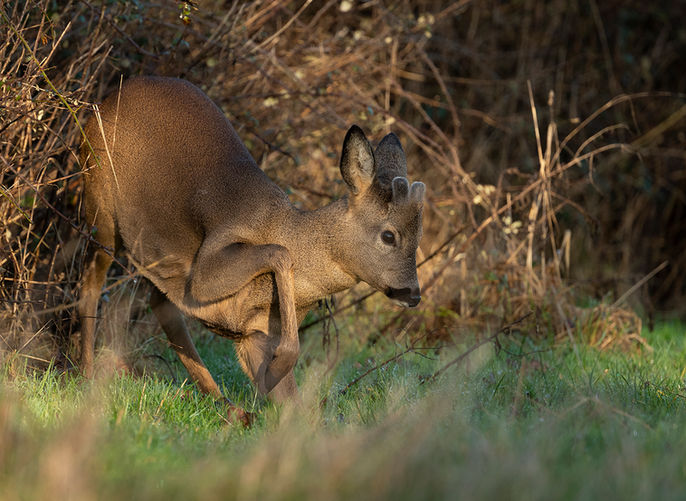About Deer
January
Key behaviours / activities to look out for this month are:
New antler grow visible on all non-fawn bucks
Adult males - which, for much of the year, are solitary - spend time with does and fawns, sometimes forming family groups
A lot of time quietly resting up, between periods of feeding
Just like December, this is quiet month for the roe deer in terms of overt, out of the ordinary type of behaviour.
Strong, chilling winds, coupled with heavy rain, tends to make them relatively inactive. However, they still need to feed fairly frequently because roe deer don't store much in the way of body fat - in fact, never getting more than 12%. (For more detail, see the article, "The biology of roe deer", in the Deer Information section.)
Therefore, no matter how inclement the weather gets, they will eventually get up to feed.
Testosterone levels are very low at this stage of the season, and as a result, the adult males are able to form a loose association with a doe and her fawns, giving you the opportunity to photograph family groups.
However, even though the males' testosterone levels are suppressed, it doesn't mean that they will not exhibit any hostile behaviour at all.
On more than one occasion, I have seen an adult buck make an aggressive gesture / move on a younger male, who had blundered into his body space.
This normally takes the form of a wide-eyed stare, along with flattening his ears, sometimes charging the youngster and making physical contact, even though his new antlers are still growing and therefore soft.
This is obviously the fawns' first winter, and they rely on their experienced mother for guidance. So, opportunities can arise to photograph the youngsters with the parental doe, and, sometimes, even with an adult buck - provided they don't get too close, that is!
Fog can be a frequent problem in the winter, particularly if it's thick and lingers all day. The deer, though, will still happily move around in these damp and murky conditions, but locating them can be challenge.
The best approach in these conditions is to proceed to the areas that have been productive in the recent past.
But you will need to be especially careful, though: Your 'deer detection radius' will be greatly impaired by the presence of the fog, but the deer's corresponding detection radius, will not be reduced by the same extent.











